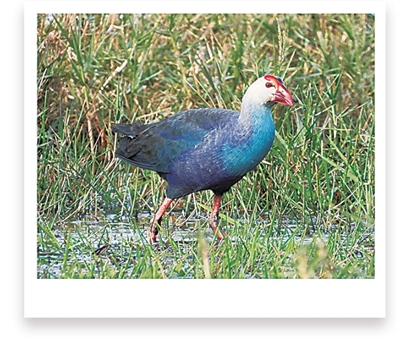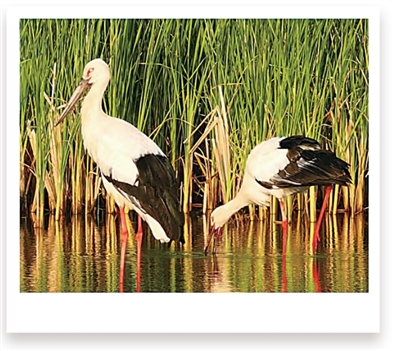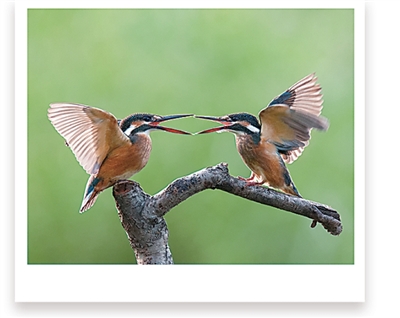




- BRNN
- BRI News
- BRNN News
- Database
Official Documents Polices and Regulations
Inter-government Documents International Cooperation BRI Countries
Business Guide Economic Data BRI Data
Trade
Investment Projects Latest projects
Cases - Content Pool
China ranks among the countries with the richest bird resources in the world and is an important cross-border migration corridor for migratory birds. Four of the world's nine major flyways pass through China. In recent years, China has significantly strengthened its conservation efforts, designating 1,140 key stopover sites and recognizing 58 nationally important wetlands, building a flyway protection network.
Guangdong Haifeng Wetlands: A thriving habitat for migratory birds
At daybreak at the Haifeng Bird Provincial Nature Reserve in Haifeng county, Shanwei city, south China's Guangdong Province, Zeng Xiangwu, a senior engineer with the science and education team of the nature reserve's management department, began his daily patrol.
With more than 20 years of experience in migratory bird conservation, Zeng pays close attention to the black-faced spoonbill, a species under first-class state protection in China.

Photo shows a western swamphen at the Haifeng Wetlands, a wetland site considered internationally important, in Haifeng county, Shanwei city, south China's Guangdong Province. (Photo/Zeng Xiangwu)
The Haifeng Wetlands, a wetland site considered internationally important, boast a rich coastal wetland ecosystem, with its favorable natural conditions turning the area into a vibrant sanctuary for birds.
During a routine patrol last summer, staff members spotted five glossy ibises, a species under first-class state protection in China, marking the first time this rare bird has ever been recorded in Haifeng or even Shanwei.
"Glossy ibises are very sensitive to habitat quality. Their presence confirms how far we've come in protecting the environment," Zeng explained.
The nature reserve is also a crucial point on the East Asian-Australasian Flyway. Each year from November to March, tens of thousands of migratory birds arrive to overwinter.
"In February last year, we observed eight black storks and 209 oriental white storks searching for food in the grassy shallows of a reservoir, the highest count on record," said Zeng.
To ensure the safe passage and overwintering of migratory birds, the nature reserve has implemented grid-based management, stepped up patrolling and monitoring, and recorded detailed data on bird behavior and migration routes.
"To boost monitoring efficiency, we've installed eight high-definition cameras that run 24/7. This year, we're also adopting AI-powered systems to create an integrated space-air-ground bird recognition network," Zeng added.
Wild bird populations in Haifeng Bird Provincial Nature Reserve are steadily increasing. The number of recorded species has risen from 72 in 1998 to 273 currently, including 14 under first-class state protection and 55 under second-class state protection. The black-faced spoonbill population has hit a record high of 451.
Yellow River Delta National Nature Reserve: A destination for more migratory birds
In late April 2025, the Yellow River Delta National Nature Reserve in Dongying, east China's Shandong Province celebrated the hatching of its first artificially incubated crested ibis chick of the year.
"This year's first chick hatched a month earlier than last year's," said Wang Andong, head of the nature reserve's research center. That's great for the growth of the chick and a clear sign that crested ibises are adapting well to the area's environment," Wang explained.

Oriental white storks search for food at the Yellow River Delta National Nature Reserve in Dongying, east China's Shandong Province. (Photo/Yang Bin)
The crested ibis is known as the "Oriental Gem." In 1981, Chinese experts discovered the world's last seven wild crested ibises in a remote valley in Yangxian county, Hanzhong city, northwest China's Shaanxi Province. In December 2022, 20 crested ibises were relocated from Hanzhong, traveling over 1,300 kilometers to the migratory bird habitat at the Yellow River estuary.
During the 2024 breeding season, a mix of artificial and natural incubation produced 20 crested ibis chicks. On March 27, 2025, the first three crested ibis eggs of this year were laid at the Yellow River estuary.
The Yellow River Delta is located at the crossroads of two major flyways, the East Asian-Australasian Flyway and the West Pacific Flyway.
"Back in 1988 when I first arrived, it was all barren and dust storms," recalled senior engineer Zhang Xitao, who has worked at the nature reserve for 37 years.
Things began to change with systematic ecological restoration. The nature reserve reconnected water systems and cleared tidal channels. In the past three years, over 510 million cubic meters of water have been reintroduced. Salt-tolerant seepweed was the first to return, followed by reeds and tamarisk, signaling ecological recovery.
At the nature reserve's monitoring center, Zhao Yajie, deputy head of the nature reserve, pulled up a live video feed. Atop a 40-meter tower, a pair of oriental white storks is feeding their chicks. To support the breeding season, staff members released 5,000 kilograms of fish fry into the wetland. In 2025, the nature reserve recorded a record-breaking 233 nests and 536 hatched chicks of oriental white storks.
Zhao explained that to tighten the conservation network, the nature reserve has established an integrated sky-land-sea monitoring system and a real-time bird tracking platform.
"We've equipped some chicks with satellite trackers to monitor their movements online in real time. We've also developed technology to identify oriental white stork breeding behavior," he said.
In recent years, the number of bird species has doubled at the nature reserve, from 187 when it was just established to 374 now.
Yalu River Estuary Wetland provides a stop for migratory to rest
Since 2021, Dong Yonggang has served as a patrol staff member at the Gushan station of the management center of the Yalu River Estuary Wetland National Nature Reserve in Dandong, northeast China's Liaoning Province. Each week, he completes at least three full patrols of his assigned area.
Situated along the East Asian-Australasian Flyway, the area is one of the most important stopover sites for shorebirds. Dong explained that his patrol zone sees frequent human activity. During peak migration seasons, he increases patrol frequency to reduce disturbances and help ensure the estuary remains a peaceful sanctuary where people and birds can coexist.

Common kingfishers are seen at the Yalu River Estuary Wetland in Dandong, northeast China's Liaoning Province. (Photo courtesy of the Yalu River Estuary Wetland National Nature Reserve)
The vast intertidal mudflats at the estuary teem with benthic life, providing a rich feeding ground for migratory birds. Species recorded here include spoon-billed sandpiper, with a global population of just a few hundred, and Nordmann's greenshank, with a global population of just over 1,000.
"During peak migration season, we have to be at the observation sites by 4 or 5 a.m., before the tide rolls in," said Sui Yanzuo, deputy director of the management center at the nature reserve.
"Once the mudflats are underwater, we head to nearby ponds to track where the birds settle. Some days, we barely manage three or four hours of sleep. This spring, during just one monitoring cycle, we recorded 36 species of waterbirds—over 160,000 individuals in total," Sui added.
To enhance conservation efforts, the nature reserve has partnered with research institutions to track migratory birds via satellite. The data collected supports the creation of a science-based network of protected stopover sites and contributes to global flyway conservation.

Tel:86-10-65363107, 86-10-65368220, 86-10-65363106